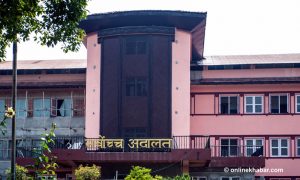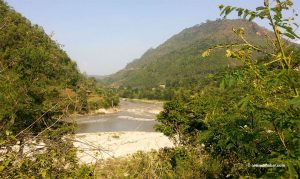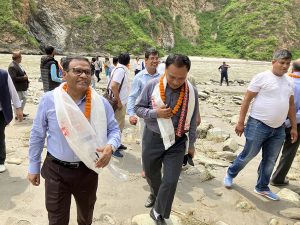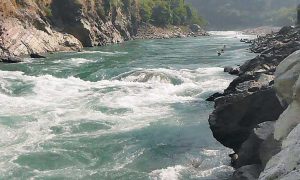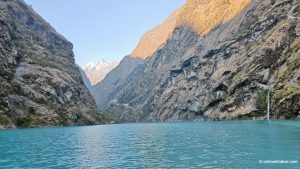
The Kulekhani dam (Indrasarovar Lake) used as a reservoir for the Kulekhani hydropower project, the country’s only reservoir-based power project, is in a sorry state. Over the course of the past few months, it has dried up significantly, raising concern among locals and environmentalists.
While the locals are worried it will drive away domestic tourists, environmentalists argue it will have a long-term impact on the region. Despite the concerns, the Nepal Electricity Authority (NEA) intends to persist in utilising water from the reservoir for electricity generation, as stated by NEA Managing Director Kulman Ghising, who expects the water level to decrease by an additional 10 meters.
NEA’s masterplan

Last monsoon, the water level of Kulekhani reached 1,530 metres above sea level. At this point, the reservoir was overflowing. During the winter, after the authority extracted electricity from the reservoir, the water level dropped around 40 metres.
“We use this reservoir to produce electricity during the dry season. The more we use it before the monsoon, the more beneficial it is for us. That is why we think the water level will go down 10 more metres before the monsoon begins,” says Ghising.
He says that the reservoir will fill up during the monsoon and that there was no need for concern as the NEA was doing this to ensure it would not have to release water from the reservoir during the monsoon, which it had to do in the last few years.
Ghising argues the NEA has to use the Kulekhani dam during winter to avoid importing electricity from India. He says NEA’s plan is to not use the reservoir during the monsoon as the country produces enough water from river-based hydropower projects.
“We want to use the water collected in the dam during monsoon to be used in the winter. That way we will not have to import electricity from India,” says Ghising.
Power backup

Kulekhani dam, which is known as the country’s ‘power backup’ located in northern Makwanpur, can be filled with water at a level of up to 1,530 meters above sea level.
The electricity produced from the project is considered to be the most reliable source during times of high electricity demand. As the country has enough electricity sources during the monsoon, the NEA does not use the Khulekhani hydropower at all.
As it is a reservoir-based project, the Kulekhani dam collects rainwater and operates only in winter when there is a high demand for electricity. Kulekhani’s role is also considered important to maintain balance in the system.
Kulekhani I, Kulekhani II and Kulekhani III projects can produce 106 megawatts of electricity together. Kulekhani I has a production capacity of 60 MW, Kulekhani II of 32 MW and Kulekhani III has a production capacity of 14 MW.
Concerned locals

However, in recent days, increased activities in the watershed areas have caused concern in the local area due to the drying up of water sources and reducing the storage capacity of reservoirs.
Kulekhani, Markhu, Phakhel, Chitlang, Tistung, Palung and Daman are watershed areas. Dev Krishna Pudasaini, chair of Indrasarovar rural municipality, says that since the project is made for electricity generation, its water usage should not be taken negatively.
However, he says that after the mud started piling up at the bottom of the Kulekhani reservoir, locals were worried about the lifespan of the reservoir.
Pudasaini feels that NEA has taken enough measures of steps to protect the Kulekhani dam and its watershed. He feels the stones, soil, sand and weeds brought by the river into the reservoir are reducing the holding capacity of the dam.
“Trees have not been planted in the catchment area, settlements have increased, roads, houses and infrastructures have been built by encroaching the river,” he says. “This needs to stop.”
But the royalty that comes from the project is being spent by the local levels of the watershed areas in their own priority areas. In recent times, the royalty is being used to build roads instead of using it to save the watershed area.
Pudasaini, says local hotels have to be held accountable as they throw waste in the reservoir. He says that the rural municipality tried to control it, but it has failed to do so.
“Boring has increased in the watershed area, river water has been pulled with motors, haphazard infrastructures have been built that are affecting the reservoir,” he says, “It seems no one is interested in protecting the reservoir. I fear at this rate, it will not last long. The NEA needs to do something.”






